Clematis "Doctor Ruppel": a description of the variety and the secrets of its cultivation
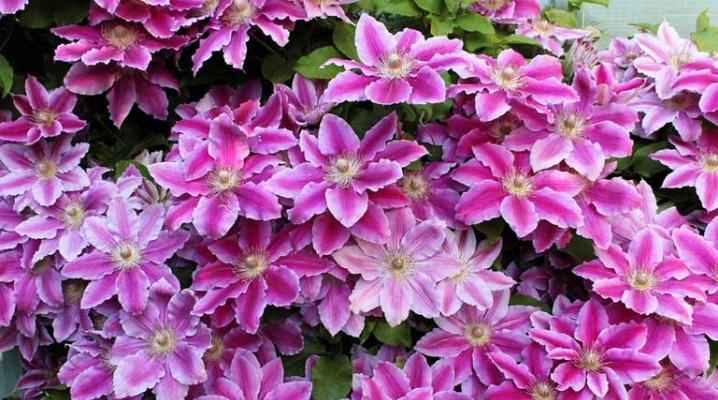
Blooming clematis are a luxurious decoration of a personal plot that can organically fit into any landscape. One of the brightest representatives of these graceful plants is the majestic Clematis "Dr. Ruppel" with unusually large flowers of an original color. However, there are nuances and secrets of growing vines of this variety.

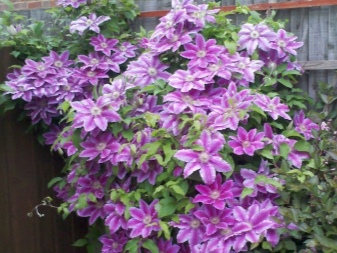
Description of the variety
Clematis of the "Doctor Ruppel" variety is a sprawling woody liana-like plant that can reach a height of 2 to 4 m. The leaves are large, pinnate, elliptical in shape with a pointed tip. The foliage has a juicy green color.
The flowers are stellate, large, capable of reaching 15–18 cm in diameter. Each flower has 6 to 8 elongated petals with pointed ends. The wavy edges of the petals visually add volume and airiness to the flowers.
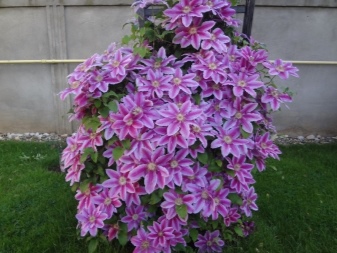
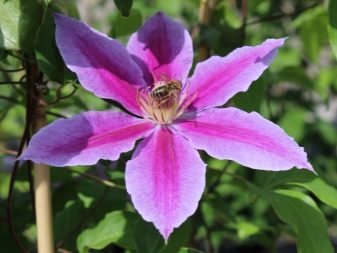
The color of the flowers is pale pink with a lilac tint. In the middle of each petal there is a longitudinal wide strip of deep pink or purple-crimson hue. The core of the flower is pale beige, covered with many thin light stamens.
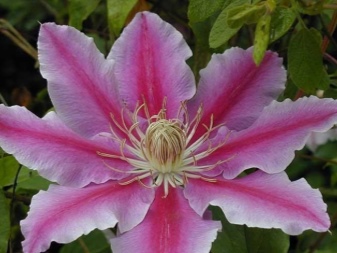

The plant is a representative group "Patens", which includes large-flowered shrub clematis. In the creeper of the described variety, in early summer (May-June), flowers bloom on the overwintered shoots of the last year, and in late summer - early autumn, the growth of the current year blooms.
Flowers that bloom in early summer are usually paler than flowers that appear in early fall.
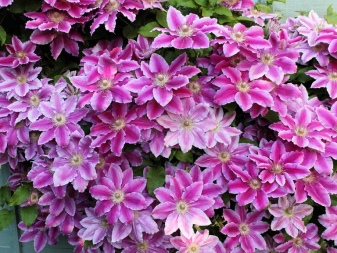
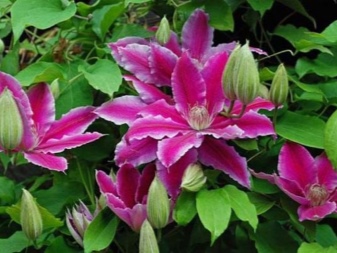
The described variety belongs to the 2nd pruning group and is considered cold-resistant, capable of taking root in difficult climatic conditions. However, the practical experience of many gardeners growing clematis in the middle lane indicates that during the wintering period last year's shoots of plants are often damaged by frost. As a result, with the arrival of spring, the affected vine hardly grows green mass, blooms reluctantly and sparsely.
Thus, despite the fact that clematis of the "Doctor Ruppel" variety belongs to the 2nd pruning group, when growing it in areas with a harsh climate, it is more expedient to prune as required by plants of 3 groups.
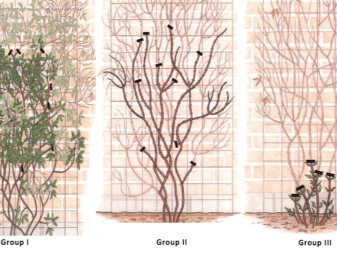
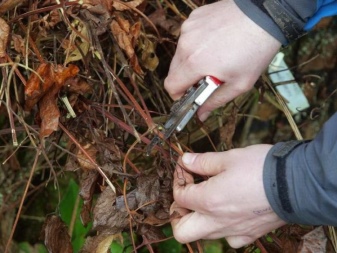
Pruning
Plants of the 2nd group are pruned weakly in the fall, shortening the shoots by about a third of the available length. In parallel, the shoots are rationed, during which weak and damaged parts of the plant are removed. Only strong and healthy shoots are left for wintering in an amount of no more than 10–12 specimens.
Further, depending on the climatic features of the region, the rest of the bush is covered with sand and covered with moisture-proof material on top, or a full-fledged shelter is erected above it.
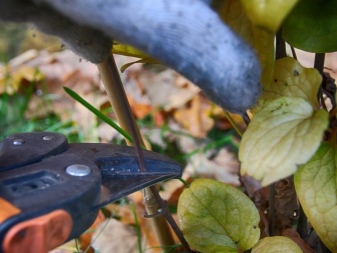
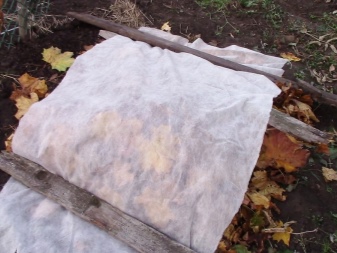
Clematis of the 3rd group are subjected to radical pruning, shortening the shoots almost to the very base of the bush (approximately to a height of 10-15 cm). The rest of the bush is insulated before wintering. On healthy, well-developed shrubs, some gardeners perform a combination pruning, which involves the preservation of some of the shoots. They are shortened in the way that the technique of pruning plants of the 2nd group provides. The rest of the shoots are strongly cut off (approximately to a height of 1–2 knots from the ground surface).
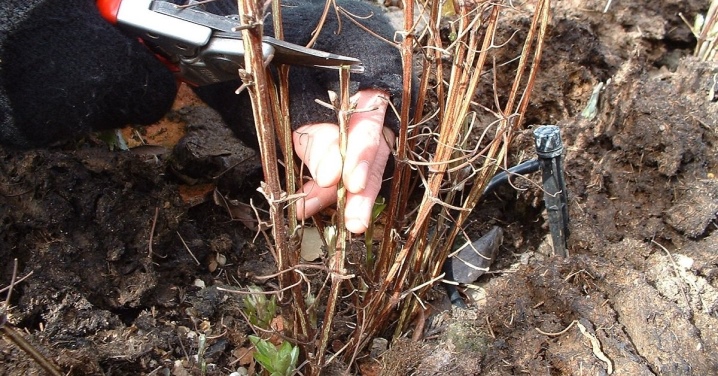
It should be noted that combined pruning should not be performed on young, weakened or diseased plants.This procedure can severely deplete clematis and even cause their death.
Features of seat selection and landing
One of the most important steps prior to planting Doctor Ruppel clematis is choosing a suitable location. By choosing the right planting site for this beautifully flowering perennial, the owner of the backyard can significantly reduce the risk of freezing and death of the plant.
Like other representatives of this genus, clematis varieties "Dr. Ruppel" takes root well in semi-shady or sunny places, protected from drafts, wind and scorching sun. Experienced gardeners recommend placing these plants in the southern, southeastern or southwestern part of the site. And also suitable for planting clematis east and west side.

It is not recommended to plant clematis in places exposed to the sun. Observations show that the flowers of Clematis "Dr. Ruppel" quickly fade in direct sunlight, losing their saturation and brightness of their color.
It should be noted that in the place reserved for planting clematis, water should not stagnate. The best option for placing these lianas is in the corners of the garden with loose, well-drained soil that has neutral acidity.
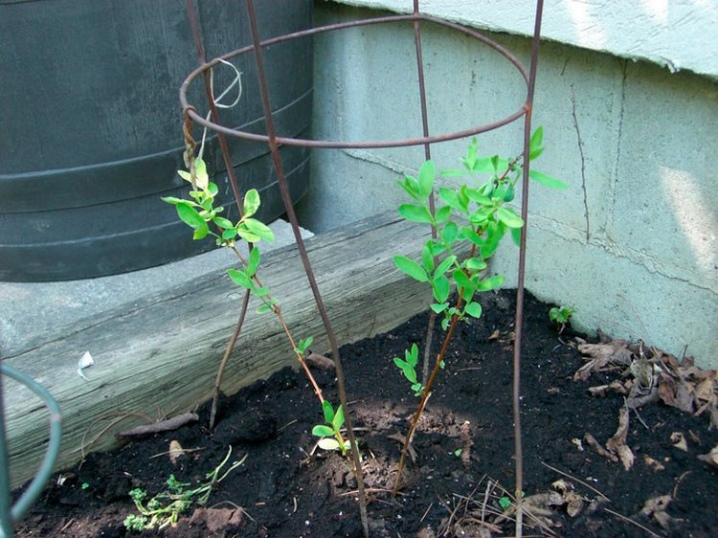
It is allowed to plant these climbing plants at the walls of the house, along the fences, next to the pre-prepared frame supports: trellises, pergolas, arches. In these cases, when planting clematis, it is necessary to ensure that the distance between the plants and the support is at least half a meter. Planting vines close to the supports is strongly discouraged: this can lead to wetting and freezing of the bushes.
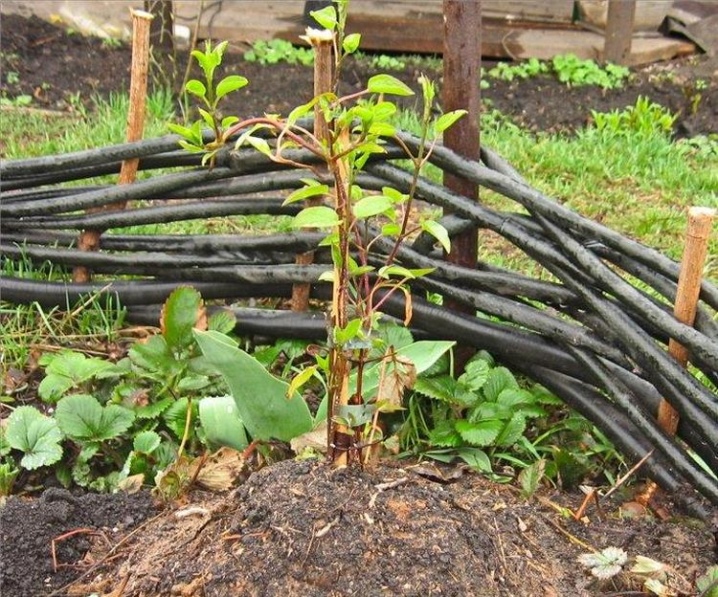
When noting places on the site for planting clematis varieties "Doctor Ruppel", it should be borne in mind that this tall plant needs plenty of space. For this reason, the distance between the planting pits should be at least 80–120 cm. After determining the landing sites, they begin to arrange the landing pits with dimensions of 60X60X60 cm:
- a layer of drainage mixture with a thickness of about 10 cm is laid on the bottom of the prepared pits;
- a mixture consisting of fertile soil, humus, sand and peat is poured over the drainage;
- additionally, 200–250 g of wood ash, 50 g of superphosphate and 10 liters of mullein solution are introduced into the pit.
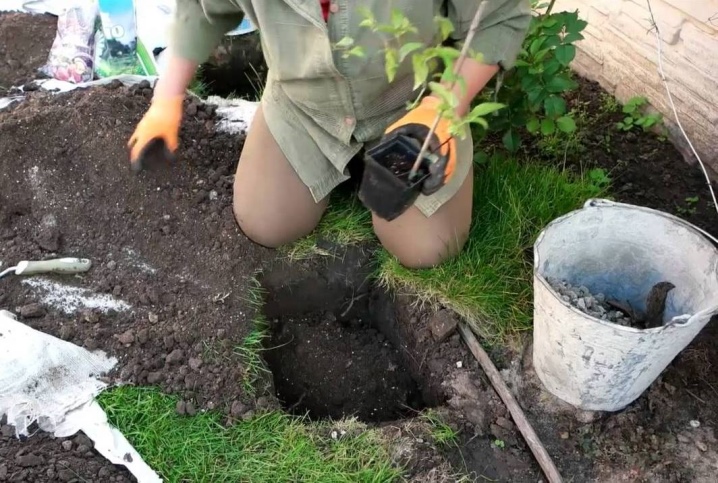
Young plants are planted with great care, trying not to destroy the clod of earth on the roots. When planting, make sure that the roots of the vines are straightened, and not closely intertwined with each other.
After planting, the earth around the stem is compacted, gently pressing it with palms from all sides, and the plant is watered abundantly. After watering, the ground around the stem is mulched.
Experienced gardeners recommend when planting deepen the root collar of clematis by a few centimeters and cover it with sand on all sides... This will contribute to an intensive build-up of the root mass and, as a result, more abundant and lush flowering.
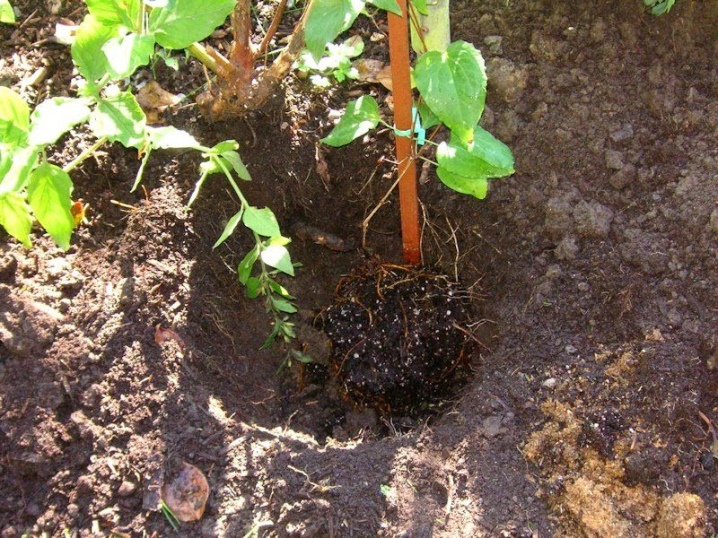
Care secrets
Liana of the described variety is considered not too demanding to care for. So that she feels good and tirelessly delights her owner with lush flowering, the gardener should pay special attention to the following basic activities:
- top dressing;
- watering;
- loosening and mulching.
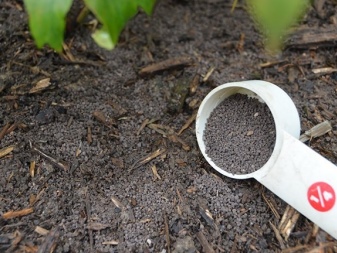
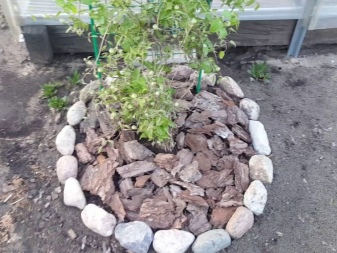
Top dressing
In order for the liana of the "Doctor Ruppel" variety to bloom profusely and for a long time, it needs regular feeding. The active formation of green mass and buds depletes these sensitive perennials, depriving them of their strength and immunity. Starting in May, when clematis enter the phase of flowering and intensive formation of shoots, they are followed once every 7-10 days feed with any fertilizer. Usually, gardeners use complex preparations for fertilizing:
- Agricola;
- Fertika Lux;
- Kemira Lux;
- "Riga mix";
- "Effecton".


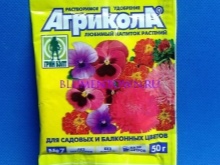
In the fall, it is recommended to feed the vines with the following composition:
- 10 liters of water;
- 20 g superphosphate;
- 20 g of potassium sulfate.

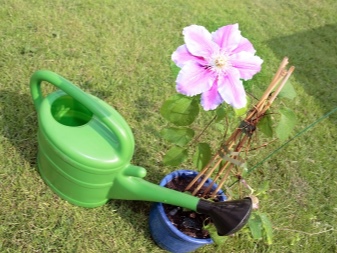
Such a nutrient solution will restore the strength of the plant after flowering and allow it to fully prepare for the upcoming winter. At the same time, the vines will begin to spend part of the unused nutrients received with the solution already in the spring, entering the phase of active growth and budding ahead of schedule. After spring pruning, it is recommended to feed the Doctor Ruppel vine with a solution ammonium nitrate (60 g of substance per 10 liters of water). The solution is consumed at the rate of:
- young plants - 5 liters per well;
- adult plants - 10 liters per well.
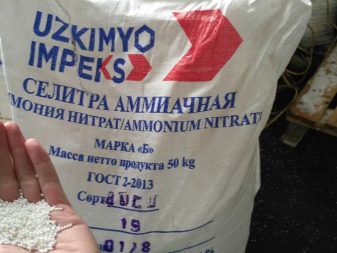
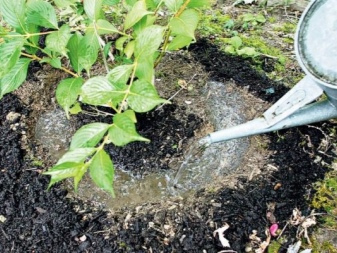
It is important to note that all top dressing of vines should be carried out only after watering. This will avoid the risk of a chemical burn to the root system.
Watering
Like all clematis, the plant of the "Doctor Ruppel" variety painfully tolerates stagnation of moisture in the soil, therefore, you should not overuse watering (especially in cool and damp weather). Waterlogging of the soil often causes fungal root diseases, from which this garden vine can die.
In a moderately hot summer, it is enough to water the clematis once every 8-10 days. If the summer is extremely hot, you need to water the vines 2 times every 8-10 days. One plant should consume from 10 to 30 liters of water (depending on the age and size of the vine). Watering is carried out so so that splashes of water do not fall on the leaves, shoots and stems of the plant... After watering, the ground around the base of the bush is mulched.

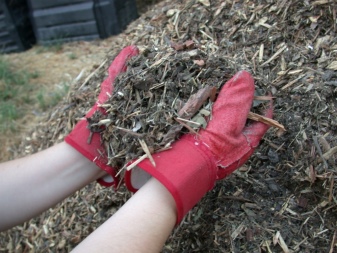
Loosening and mulching
Regular loosening of the soil around the base of the bush will provide oxygen access to the roots of clematis. Loosening the soil should be done with the utmost care, without deepening the teeth of the tool, so as not to damage the roots located close to the ground. In addition, due attention should be paid to mulching the soil. Experienced gardeners use as mulch:
- humus;
- hay;
- sawdust;
- peat.
They are scattered in an even, not too thick layer around the base of the bush. You can plant annual ground covers in a clematis hole, which will replace the mulching layer. All these measures will help to protect the roots of Clematis variety "Doctor Ruppel" from overheating, and at the same time will help prevent moisture loss in the soil.
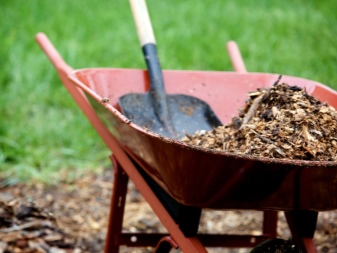
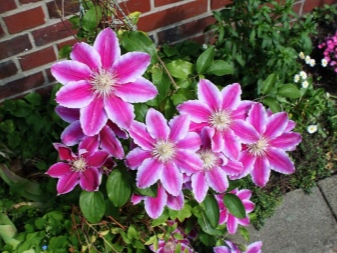
For how best to plant clematis, see the next video.







































































































Is it better to bury it by 10 cm or plant it on a mound?
But I would get such arcs. What are they made of?
The comment was sent successfully.